To install a ventless gas fireplace, start by selecting the desired location and ensuring it meets safety requirements. Then, assemble the components, connect the gas line, secure the fireplace to the wall or floor, and test for proper operation.
A ventless gas fireplace provides a convenient and efficient heating option, without the need for a chimney or venting system. It can be a great addition to any home, offering warmth and ambiance. Whether you are looking to add a cozy touch to your living room or upgrade a traditional fireplace, installing a ventless gas fireplace can be a relatively straightforward process with the right tools and instructions.
Follow these steps to safely and successfully install your ventless gas fireplace.
Choosing The Right Ventless Gas Fireplace
Installing a ventless gas fireplace in your home is a great way to add warmth and ambiance without the hassle of a traditional fireplace. However, with so many options available, it can be overwhelming to choose the right one for your space. In this section, we will highlight the key factors to consider when selecting a ventless gas fireplace, including determining the suitable size and type for your space, as well as understanding safety regulations and requirements.
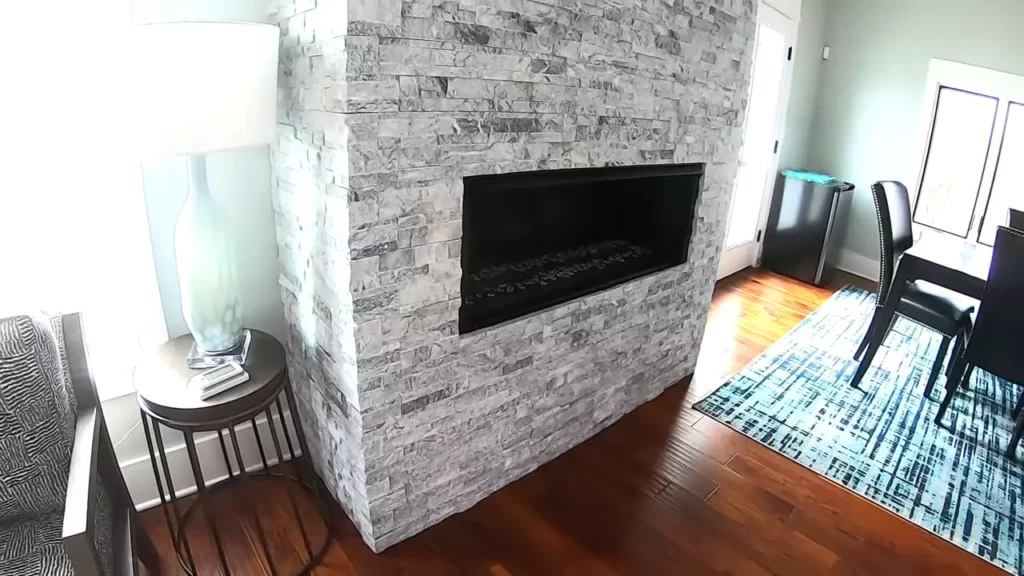
Factors to consider when selecting a ventless gas fireplace
Choosing the right ventless gas fireplace involves considering several crucial factors:
- BTU Output: The first thing you should consider is the amount of heat you need. This can be determined by calculating the square footage of your room and consulting the fireplace’s BTU rating. It is important to select a fireplace that produces enough heat for your space.
- Fuel Type: Ventless gas fireplaces can be powered by either natural gas or propane. Consider the availability and cost of these fuel types in your area before making a decision.
- Design and Aesthetics: Your ventless gas fireplace should not only provide warmth but also enhance the overall look and feel of your space. Consider the design, finish, and style options available to ensure it complements your existing décor.
- Installation Requirements: Take into account the installation requirements of the ventless gas fireplace you are considering. Some may require professional installation, while others may offer a straightforward DIY setup.
- Price Range: Set a budget for your ventless gas fireplace. Consider the initial cost, as well as any additional expenses such as installation, maintenance, and fuel costs.
Determining the suitable size and type of fireplace for your space
Choosing the right size and type of ventless gas fireplace is crucial to ensure optimal heat distribution and efficiency. Here are some steps to follow:
- Measure Your Space: Begin by measuring the dimensions of your room, including the height of the ceiling. This will help you determine the appropriate fireplace size.
- Consider Room Layout: Take into account the layout of your room, including the location of windows, doors, and furniture. This will help you determine the best placement for your fireplace.
- Type of Fireplace: There are various types of ventless gas fireplaces available, including freestanding, wall-mounted, and insert models. Consider your space requirements and personal preferences when choosing the type.
Understanding safety regulations and requirements
Before installing a ventless gas fireplace, it is vital to understand and adhere to safety regulations and requirements. Here are some key points to consider:
- Local Codes and Regulations: Check your local building codes and regulations to ensure that ventless gas fireplaces are allowed in your area.
- Ventilation: While ventless gas fireplaces do not require a chimney or vent, it is essential to ensure proper ventilation in the room to maintain air quality and safety.
- Carbon Monoxide Detectors: Install carbon monoxide detectors near the fireplace to detect any potential leaks and ensure the safety of you and your family.
- Regular Maintenance: Follow the manufacturer’s guidelines for regular maintenance to keep your ventless gas fireplace in optimal working condition and prevent any safety hazards.
By considering these factors and adhering to safety requirements, you can confidently choose the right ventless gas fireplace for your space. Stay warm and cozy throughout the colder months with a fireplace that perfectly suits your needs and preferences.
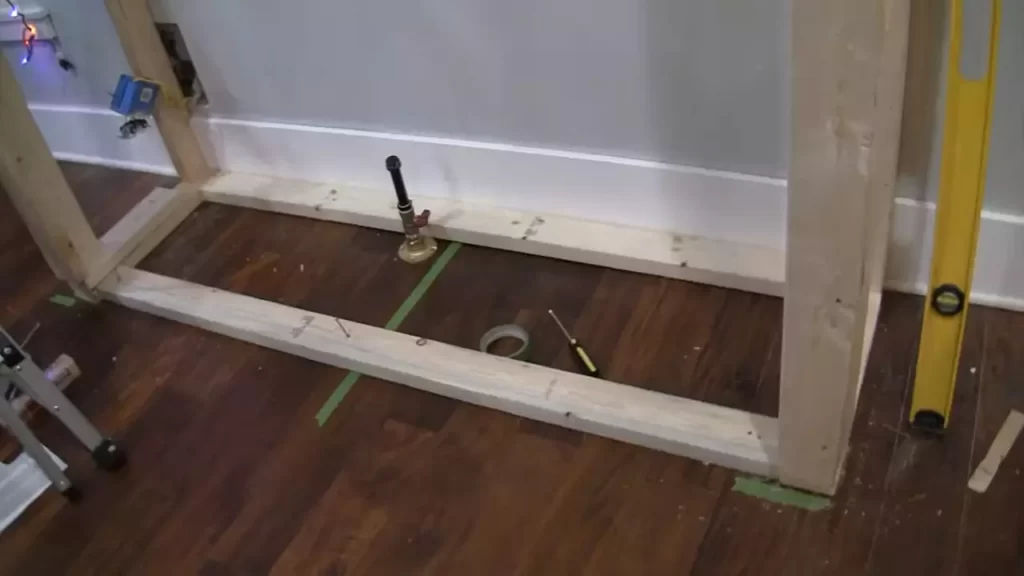
Preparing Your Space For Installation
Before installing a ventless gas fireplace, it is important to ensure that your space is well-prepared. This involves clearing the area where the fireplace will be installed, evaluating the existing gas supply, and assessing the ventilation requirements. By following these steps, you can ensure a successful and safe installation of your ventless gas fireplace.
Clearing the area where the fireplace will be installed
The first step in preparing your space for installation is to clear the area where the ventless gas fireplace will be placed. Remove any furniture, rugs, or other objects that might obstruct the installation process. It is important to have enough space around the fireplace for proper ventilation and maintenance. By clearing the area, you can ensure that the fireplace will be installed in a safe and accessible manner.
Evaluating the existing gas supply and making necessary adjustments
Next, it is essential to evaluate the existing gas supply in your home and make any necessary adjustments. A ventless gas fireplace requires a direct connection to a gas line for fuel. Check if there is an existing gas line near the installation area. If not, consult with a professional gas technician to install a new gas line. Additionally, ensure that the gas supply is adequate for the fireplace’s input requirements. The gas supply should be able to accommodate the fireplace’s BTU rating to ensure optimal performance.
Assessing the ventilation requirements for a ventless gas fireplace
Proper ventilation is crucial for the safe operation of a ventless gas fireplace. Unlike traditional fireplaces, ventless gas fireplaces do not require a chimney or external venting. However, they do require adequate ventilation within the room. Assessing the ventilation requirements involves calculating the room’s size and ensuring it meets the manufacturer’s guidelines. Keep in mind that a ventless gas fireplace consumes oxygen from the room and produces small amounts of carbon dioxide and moisture. It is essential to provide sufficient fresh air circulation in the area where the fireplace will be installed to maintain optimal air quality.
In conclusion, when preparing your space for the installation of a ventless gas fireplace, it is crucial to clear the area, evaluate the existing gas supply, and assess the ventilation requirements. By following these steps, you can ensure a safe and efficient installation that will provide warmth and comfort in your living space.
Installing The Ventless Gas Fireplace
Step-by-step guide to installing the ventless gas fireplace
Installing a ventless gas fireplace can be a great addition to your home, providing warmth and ambiance without the need for a chimney or vent. If you’re a handy DIYer, you can save money by installing the fireplace yourself. In this step-by-step guide, we will walk you through the installation process, ensuring a safe and successful installation.
1. Plan your installation
Start by carefully planning where you want to install the ventless gas fireplace. Consider factors such as the size of the room, proximity to windows or doors, and accessibility to a gas line. Make sure you comply with local building codes and regulations for proper ventilation and clearance requirements.
2. Gather your tools and materials
Before you begin, gather all the necessary tools and materials for the installation. These may include a gas valve key, a gas line, a pipe cutter, wrenches, a level, a tape measure, and other equipment as specified in the manufacturer’s instructions.
3. Install the gas line
Carefully connect the gas line to the fireplace according to the manufacturer’s instructions. Ensure that the connection is secure and leak-proof. You may want to apply pipe joint compound or pipe tape to the threads for added security.
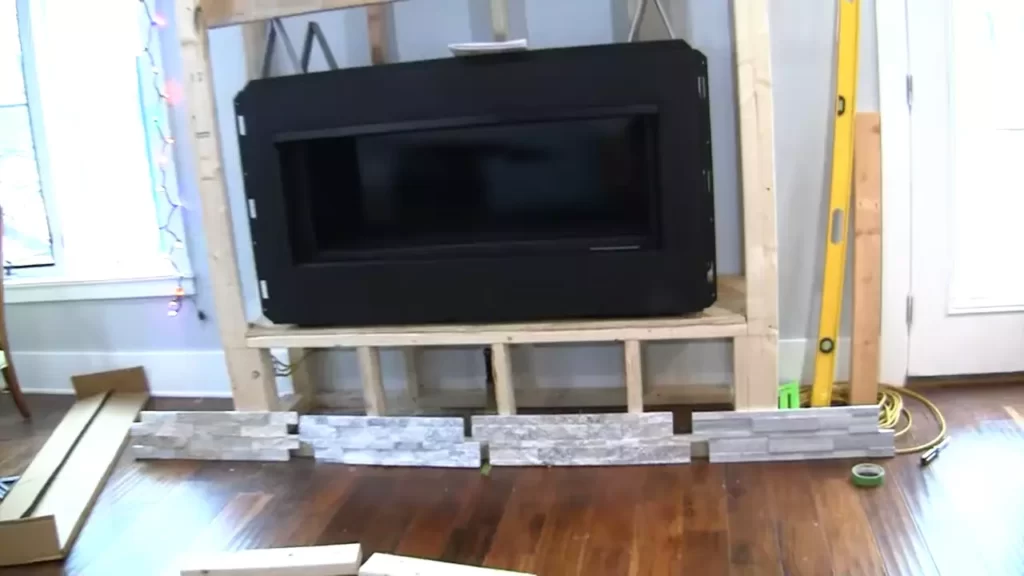
4. Secure the fireplace
Place the ventless gas fireplace in the designated area, making sure that it is level and properly aligned. Use anchors or brackets to secure the fireplace to the wall or floor, as specified in the manufacturer’s instructions. This will prevent any movement or potential hazards.
5. Test the installation
Once you have completed the installation, it is crucial to test the gas fireplace to ensure everything is in working order. Open the gas valve and check for any gas leaks using a leak detection solution. Follow the manufacturer’s instructions for testing the ignition and flame.
Remember, the installation of a ventless gas fireplace should be done by someone with knowledge and experience in working with gas appliances. If you are unsure or uncomfortable with any step of the installation process, it is always best to seek professional assistance.
By following this step-by-step guide, you can enjoy the warmth and beauty of a ventless gas fireplace in your home. Remember to regularly maintain and inspect your fireplace to ensure optimal performance and safety for years to come.
Safety Measures And Precautions
When it comes to installing a ventless gas fireplace in your home, it’s important to prioritize safety. Understanding the potential risks and taking necessary precautions can ensure that you enjoy the warmth and coziness of your new fireplace without any worries. In this section, we will discuss some key safety measures you should consider when installing a ventless gas fireplace.
Understanding the Potential Risks of Ventless Gas Fireplaces
Before you begin the installation process, it’s crucial to have a clear understanding of the potential risks associated with ventless gas fireplaces. These types of fireplaces do not require a chimney or a vent, which means that any combustion byproducts, such as carbon monoxide, are released directly into the room. Carbon monoxide is an odorless and colorless gas that can be extremely dangerous if inhaled in high concentrations. Therefore, it is vital to ensure proper ventilation and invest in safety measures to minimize the risk of carbon monoxide poisoning.
Properly Ventilating the Room to Ensure Adequate Air Quality
One of the key safety measures you need to take when installing a ventless gas fireplace is to ensure proper ventilation. Adequate air quality is essential to prevent the buildup of carbon monoxide and other potentially harmful gases. Here are a few steps you can take to properly ventilate the room:
- Keep the room well-ventilated by opening windows or using exhaust fans to allow fresh air to circulate.
- Avoid blocking any vents or air intakes in the room to maintain a steady flow of fresh air.
- If the room is too small or poorly ventilated, consider installing a ventilation system specifically designed for ventless gas fireplaces.
Installing Carbon Monoxide Detectors and Maintaining Regular Inspections
In addition to proper ventilation, installing carbon monoxide detectors throughout your home can provide an extra layer of safety. These detectors are designed to alert you when the levels of carbon monoxide in the air reach potentially dangerous levels. Here are some tips to keep in mind:
- Install at least one carbon monoxide detector on every level of your home, including the room where the ventless gas fireplace is installed.
- Ensure that the detectors are installed at the recommended height and follow the manufacturer’s instructions for maintenance and battery replacement.
- Schedule regular inspections to check for any leaks or malfunctions in your ventless gas fireplace. It is advisable to have a professional technician perform these inspections to ensure proper functioning and safety.
By understanding the potential risks associated with ventless gas fireplaces, properly ventilating the room, and installing carbon monoxide detectors, you can enjoy the warmth and ambiance of your fireplace with peace of mind. Remember to always prioritize safety and take necessary precautions to ensure the well-being of yourself and your loved ones.
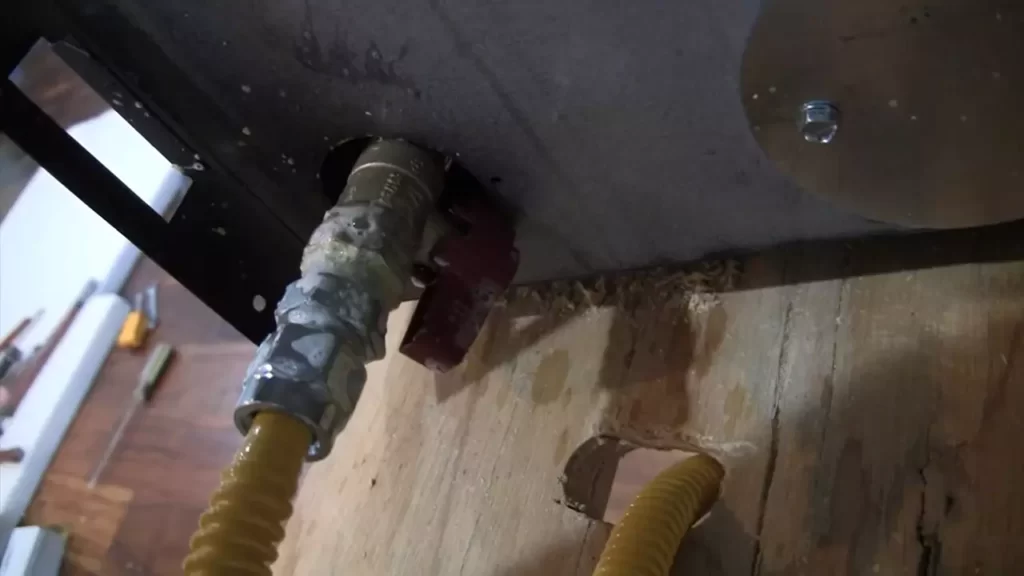
Testing And Troubleshooting
Once your ventless gas fireplace is installed, it’s important to conduct thorough testing and troubleshooting to ensure it is functioning properly and safely. This will not only give you peace of mind but also help prevent any potential issues from arising in the future. In this section, we will discuss the steps involved in conducting a thorough inspection, testing for proper gas flow and ignition, as well as troubleshooting common issues that may arise.
Conducting a thorough inspection of the installed fireplace
Before conducting any tests, it’s essential to carefully inspect the installed ventless gas fireplace to make sure everything is in order. Here are some key areas to focus on during your inspection:
- Check for any visible damage or loose connections in the gas lines or valves.
- Ensure that the fireplace is securely mounted to the wall or floor.
- Inspect the pilot light to ensure it is clean and free of any obstructions.
- Examine the burner, ensuring it is properly aligned and free from debris or blockages.
- Inspect the ventilation system, ensuring that there are no obstructions or signs of damage.
- Verify that the gas shut-off valve is in the correct position to allow for proper gas flow.
By conducting a thorough inspection, you can identify any potential issues that may affect the performance and safety of your ventless gas fireplace.
Testing for proper gas flow and ignition
Once you have completed the inspection, it’s time to test for proper gas flow and ignition. Follow these steps to ensure the fireplace is functioning as intended:
- Turn on the gas supply to the fireplace.
- Listen for the sound of gas flowing and check for any noticeable smells of gas leakage. If you detect either of these, immediately turn off the gas supply and seek professional assistance.
- Turn the fireplace on and observe the pilot light. It should ignite quickly and remain lit. If the flame is unstable or does not ignite at all, there may be an issue with the ignition system that requires further investigation.
- Adjust the flame height using the control knob to ensure it is both visually appealing and functioning optimally.
- Observe the burner, ensuring a consistent and even flame pattern. Any irregularities may indicate a problem that needs troubleshooting.
By testing for proper gas flow and ignition, you can ensure the safe and efficient operation of your ventless gas fireplace.
Troubleshooting common issues and seeking professional help if needed
In some cases, despite conducting a thorough inspection and testing, you may encounter issues with your ventless gas fireplace. Here are some common problems and their possible solutions:
| Problem | Solution |
|---|---|
| The pilot light does not stay lit. | Check for a faulty thermocouple or pilot assembly. Clean or replace as necessary. |
| Uneven or weak flame. | Inspect the burner for blockages or debris. Clear away any obstructions to ensure proper gas flow and ignition. |
| Gas odor or leakage. | Immediately turn off the gas supply and contact a professional technician to inspect the fireplace for leaks and make any necessary repairs. |
If you encounter any issues that you are unable to resolve on your own, it is important to seek professional help. Gas fireplaces can be complex systems, and attempting repairs without proper knowledge and experience can be dangerous. Don’t hesitate to contact a licensed technician to address any problems and ensure the continued safe operation of your ventless gas fireplace.
In conclusion, testing and troubleshooting your ventless gas fireplace is an essential step in ensuring its proper and safe operation. By conducting a thorough inspection, testing for proper gas flow and ignition, and troubleshooting common issues, you can enjoy the warmth and ambiance of your fireplace with peace of mind.
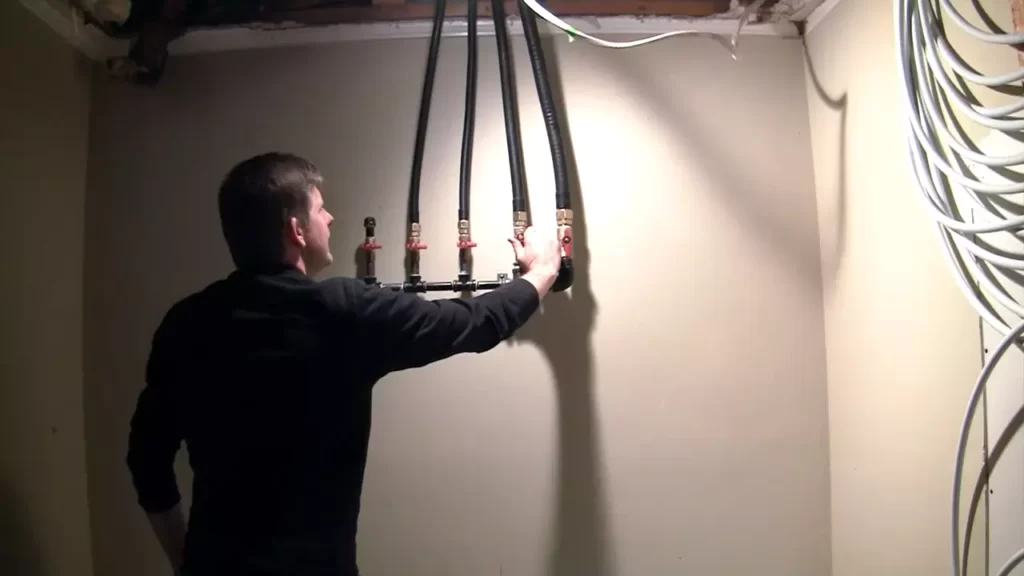
Maintenance And Cleaning Tips
Proper maintenance and regular cleaning are crucial for keeping your ventless gas fireplace in optimal condition. By following these routines and addressing any issues promptly, you can ensure the longevity and aesthetic appeal of your fireplace. Here are some essential tips:
Regular maintenance routines for optimal performance
Performing regular maintenance routines is essential to keep your ventless gas fireplace running smoothly. Here are a few tasks you should include in your maintenance routine:
- Clean or replace the air filter: The air filter plays a vital role in providing clean and efficient combustion. Check the manufacturer’s instructions on how often the filter should be cleaned or replaced and adhere to it accordingly.
- Inspect and clean the burners: Over time, debris and dust can accumulate on the burners, affecting their performance. It’s important to inspect and clean the burners at regular intervals to ensure proper flame distribution and reduce the risk of ignition problems.
- Check for gas leaks: Gas leaks can be dangerous and should be addressed immediately. Regularly inspect the gas connections, valves, and fittings for any signs of leakage. If you detect a gas leak, turn off the gas supply and contact a professional technician to fix the issue.
- Inspect the ignition system: The ignition system is responsible for starting the fireplace. Regularly check the ignition system components, such as the pilot light or igniter, to ensure they are functioning properly. If you notice any issues, such as difficulty in igniting the fireplace, contact a professional for assistance.
Cleaning the fireplace and maintaining its aesthetic appeal
Maintaining the aesthetic appeal of your ventless gas fireplace is essential for creating a cozy and inviting atmosphere in your home. Here are some cleaning tips to keep your fireplace looking its best:
- Remove any loose debris: Before cleaning the fireplace, remove any loose debris, such as ashes or soot, using a small brush or vacuum cleaner. Be cautious not to scratch the surface or leave any scratches.
- Clean the glass or ceramic front: Use a non-abrasive glass cleaner to clean the glass or ceramic front of your fireplace. Spray the cleaner onto a soft cloth and gently wipe the surface. Avoid using harsh chemicals or abrasive materials that could damage the glass or ceramic.
- Dust the exterior: Regularly dust the exterior surfaces of the fireplace using a soft, lint-free cloth. This helps maintain its overall cleanliness and prevents the buildup of dust and dirt.
- Polish metal components: If your ventless gas fireplace has metal components, such as trim or logs, use a metal polish to restore their shine. Apply the polish according to the manufacturer’s instructions and buff the metal surfaces with a clean cloth.
Addressing any malfunctions or unusual behavior promptly
While regular maintenance and cleaning can go a long way in preventing issues, sometimes malfunctions or unusual behavior can still occur. Promptly addressing any problems will help ensure the safety and performance of your ventless gas fireplace. Here’s what to do:
- Check the power supply: If your fireplace isn’t turning on or functioning properly, check that it is securely plugged into a power outlet. Also, inspect the circuit breakers to ensure they haven’t been tripped.
- Reset the fireplace: Some ventless gas fireplaces have a reset button or switch. If you’re experiencing issues, consult the manufacturer’s instructions to locate and reset the fireplace.
- Contact a professional technician: If you’ve tried troubleshooting and the problem persists, it’s best to contact a professional technician who specializes in gas fireplaces. They have the expertise to diagnose and resolve any issues safely.
By incorporating these maintenance and cleaning tips into your routine, you can enjoy the warmth and beauty of your ventless gas fireplace for years to come.
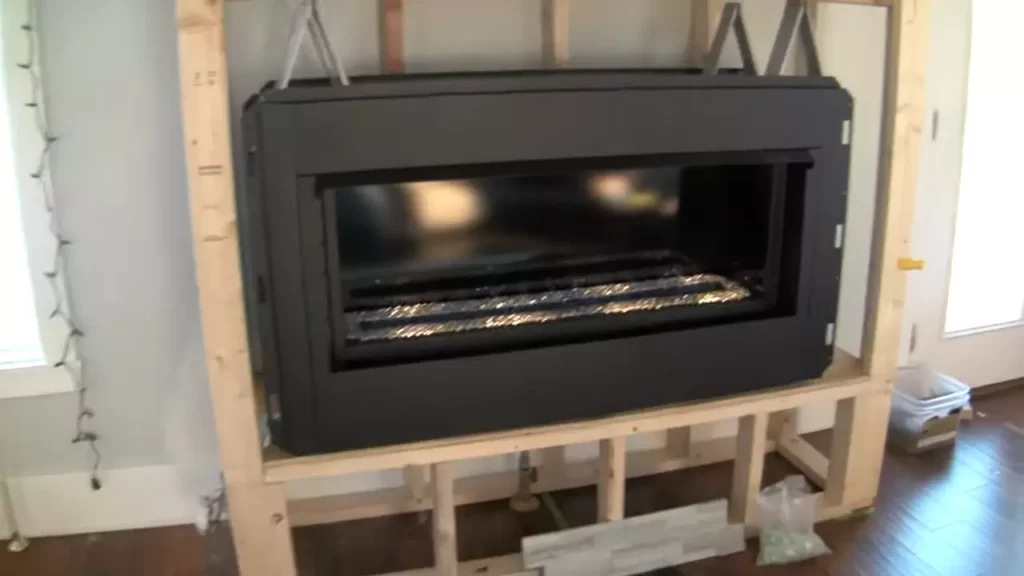
Enjoying Your Ventless Gas Fireplace
Now that you’ve successfully installed your ventless gas fireplace, it’s time to create a cozy and inviting atmosphere in your home. With the right customization and an understanding of its features and controls, you can maximize the efficiency and lifespan of your fireplace. Let’s dive in and explore how you can make the most of your new addition.
Creating a cozy and inviting atmosphere with your new fireplace
One of the key benefits of a ventless gas fireplace is its ability to create a warm and inviting ambiance in any room. Whether you’re gathered with loved ones for a cozy movie night or enjoying a quiet evening alone, the glow and warmth of the flames will enhance the overall atmosphere.
To further enhance the coziness, consider adding some decorative elements around the fireplace. Placing a plush rug or soft cushions nearby can create a comfortable seating area where you can relax and unwind. Additionally, adding some artwork or photographs on the wall above the fireplace can add a personal touch to the space.
Understanding the different features and controls for customization
Your ventless gas fireplace comes with a range of features and controls that allow you to customize your experience. Familiarize yourself with these options to make the most of your fireplace:
| Feature | Description |
|---|---|
| Variable Flame Settings | Adjust the height and intensity of the flames to achieve your desired level of coziness. |
| Thermostat Control | Set the temperature you prefer, and the fireplace will automatically maintain it, keeping your room comfortable. |
| Remote Control | Some models come with a remote control, allowing you to easily adjust settings from anywhere in the room. |
By experimenting with these features and controls, you can find the perfect setting that suits your preferences and creates the ideal atmosphere for any occasion.
Maximizing the efficiency and lifespan of your ventless gas fireplace
To ensure your ventless gas fireplace operates efficiently and lasts for years to come, it’s important to follow these maintenance tips:
- Clean the Fireplace Regularly: Remove any dust or debris from the fireplace to maintain optimal performance.
- Inspect the Gas Connections: Check for any leaks or damage in the gas connections, and address any issues promptly.
- Replace the Batteries: If your fireplace comes with a remote control or battery-powered components, regularly replace the batteries to avoid any interruptions.
- Professional Inspection: Schedule an annual inspection by a qualified technician to ensure all components are in good working condition.
By taking these steps, you can enjoy a trouble-free experience with your ventless gas fireplace while maximizing its efficiency and longevity.
With these tips in mind, you’re well on your way to enjoying the cozy warmth and inviting ambiance that your ventless gas fireplace brings to your home. Take the time to explore its features, create the perfect atmosphere, and maintain it properly for years of enjoyment.
Frequently Asked Questions For How To Install Ventless Gas Fireplace
Is It Hard To Install A Ventless Gas Fireplace?
Installing a ventless gas fireplace is not difficult. You can do it easily without having to install a chimney or vent. Just follow the manufacturer’s instructions, connect the gas line, and place the fireplace in the desired location. It’s a convenient way to add warmth and ambiance to your home.
How Much Does It Cost To Install A Ventless Gas Fireplace?
The cost of installing a ventless gas fireplace varies depending on factors such as the type and size of the unit, as well as any additional installation requirements. Generally, expect to spend between $1,000 and $5,000 for the installation. Get an accurate estimate from a professional installer for your specific needs.
Can You Put A Ventless Gas Fireplace Anywhere?
Yes, a ventless gas fireplace can be installed anywhere since it doesn’t require a chimney or vent. It provides heating and adds ambiance without the need for a traditional venting system. However, it’s important to follow local building codes and manufacturer’s guidelines for safety reasons.
Do Ventless Gas Fireplaces Need To Be Vented?
No, ventless gas fireplaces do not need to be vented. They are designed to burn the gas cleanly, without producing harmful fumes. Ventless fireplaces have built-in safety features to ensure an efficient and safe operation without the need for a chimney or venting system.
Conclusion
Installing a ventless gas fireplace can be a practical and stylish addition to your home. By following the steps outlined in this blog post, you can confidently install your own fireplace, saving both time and money. With proper planning and preparation, you’ll be able to create a cozy and warm atmosphere in your space.
Remember to always prioritize safety and consult professional help if needed. Enjoy the benefits of a ventless gas fireplace and create lasting memories with family and friends.
